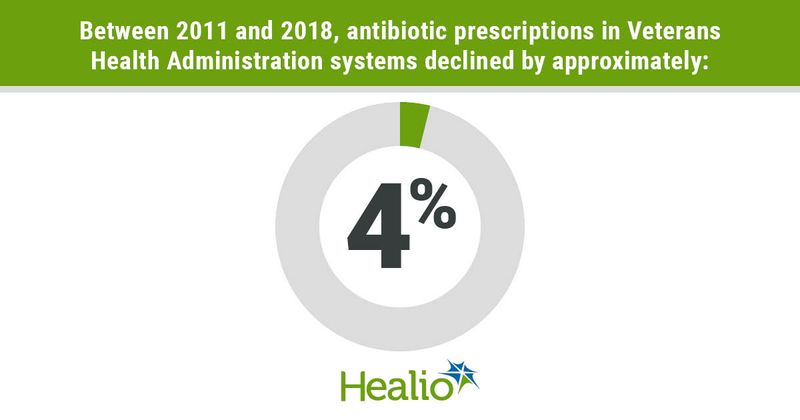Study shows decline in unnecessary antibiotic prescriptions in VA hospitals
Data from Veterans Health Administration pharmacies showed that outpatient antibiotic prescriptions declined by almost 4% annually from 2011 to 2018, researchers reported at the ECCMID virtual meeting.
The researchers said the downward trend may be attributed to antibiotic stewardship programs.

“VA clinicians should be congratulated for their efforts in reducing unnecessary antibiotic use in VA outpatient settings, such as VA outpatient clinics and community-based outpatient clinics,” Haley Appaneal, PharmD, PhD, a researcher at the Providence VA Medical Center in Rhode Island, told Healio.
“The largest reduction in outpatient antibiotic use we observed was with ciprofloxacin, which decreased 12% per year from 2011 to 2018,” Appaneal said. “These findings may be related to national movement away from using fluoroquinolones, such as ciprofloxacin, the most commonly used fluoroquinolone.”

Appaneal and colleagues examined data from VA pharmacy datasets — which included approximately 24 million antibiotic days of therapy and more than 76 million patient bed days — to decipher trends in antibiotic prescriptions between 2011 and 2018. They estimated the annual number of days of therapy (DOT) per 100 outpatients visits for all antibiotics, as well as the five most commonly prescribed antibiotics — azithromycin, amoxicillin/clavulanate, doxycycline, ciprofloxacin and sulfamethoxazole/trimethoprim.
From 2011 to 2018, antibiotic prescriptions declined from 39.6 DOT per 100 visits to 29.4 DOT per 100 visits — an average decrease of 3.9% annually. They observed the largest decline in prescribing for ciprofloxacin, which decreased by an average of 12.6% per year.
Appaneal said that the study’s limitations included an inability to account for antibiotic prescriptions outside the VA system and incomplete data regarding antibiotic use in certain outpatient settings.
“The generalizability of findings to the general U.S. population is limited,” Appaneal said. “Though the VA is a predominantly older white male population, other health systems with strong antibiotic stewardship programs in the United States may be observing similar trends.”

